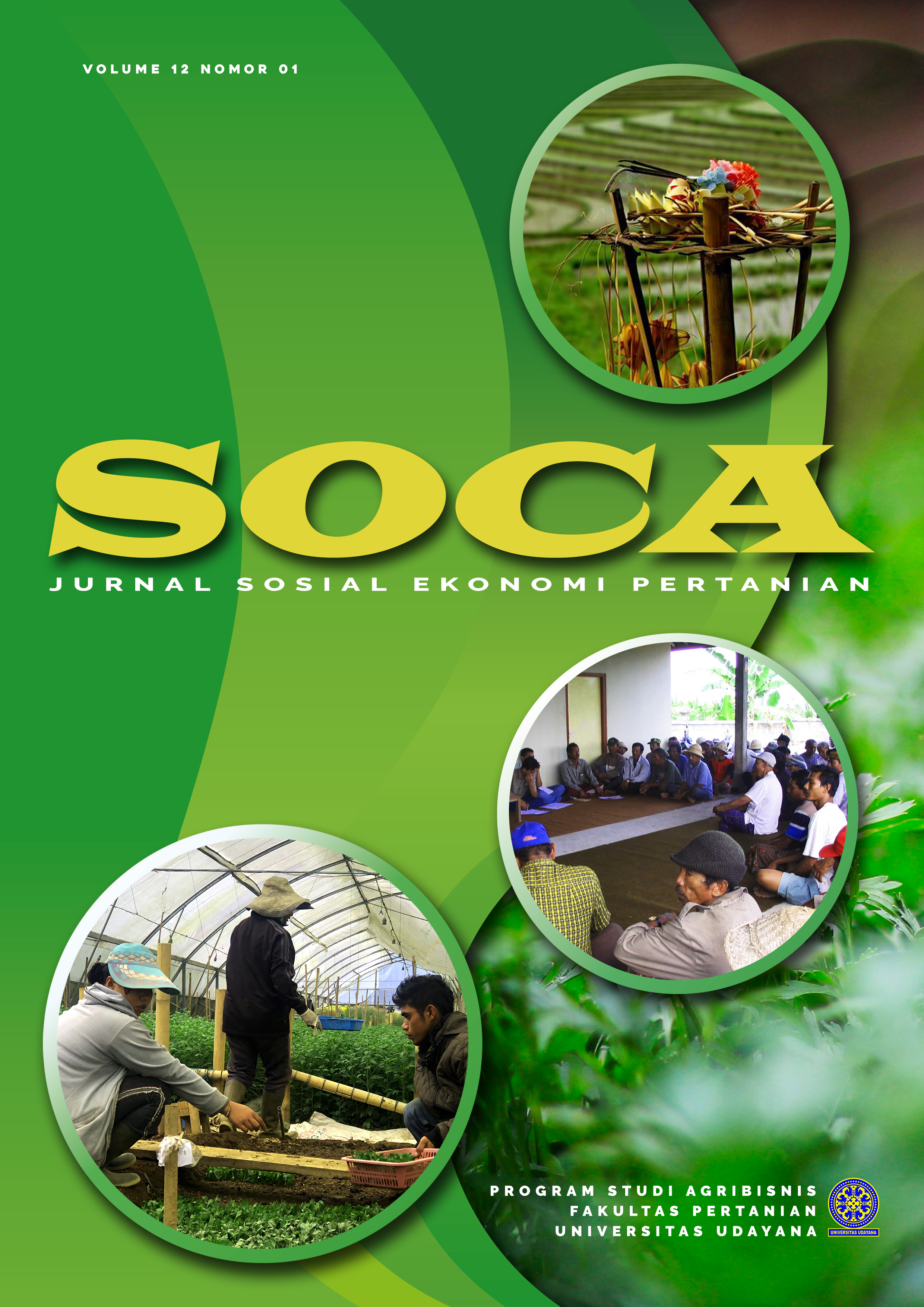RED PEPPER INCOME RISK ANALYSIS ON WETLAND HIGHLAND IN KARANGASEM DISTRICT, BALI
Abstract
This study aimed to determine the income, sources and risk mitigation, as well as the level of income risk of red chili farming. Farming analysis is used to know the income; coefficient variation to measure income risk, and qualitative descriptive analysis to identify sources and mitigate income risk. The research location was chosen purposely in Subak Iseh, Karangasem regency. This study uses secondary data as well as primary data. Respondents were taken at simple random, ie, farmers who planted red pepper in 2016/2017. The results showed that the income of red pepper farming in the rainy season was Rp 42.793.576,79/ha/ planting season and Rp 46,541,506.17/ha/planting season during the dry season. Risk of revenue comes from competitors, the physical environment condition, and the operational environment. The types of risks include price; weather and climate condition; pests infestation and disease infection; weeds; and un-optimally applied farming techniques. The level of income risk in the rainy season (3.06) was higher than that in the dry season (2.89). Risk mitigation of income was (1) risk planning, through the selection of plant resistant variety to the potential pest and disease and also resitant to environmental stress; choosing the right planting time, choosing better cultivation and harvesting techniques; determine optimal cropping area; (2) risk limitation, ie subak organization needs to develops a reliable business partnership in product marketing.













